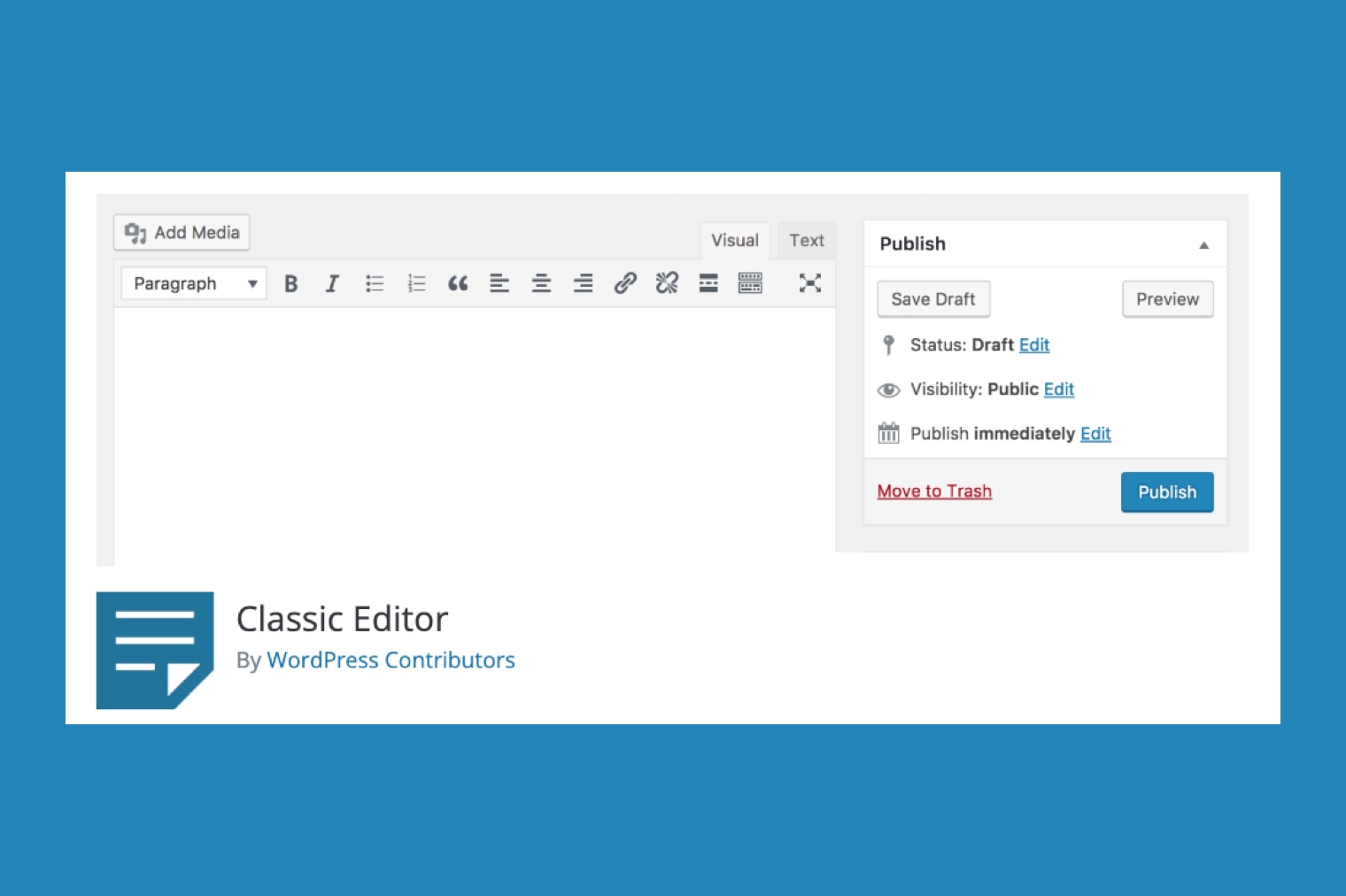Preparing Your Website For The Classic Editor Plugin End Of Life
Love it or hate it, Gutenberg, WordPress’s default editor since 2018 isn’t going away.

Oops! We could not locate your form.
Love it or hate it, Gutenberg, WordPress’s default editor since 2018 isn’t going away.

That’s not to say you have to use it, as there are many alternatives. However, if you are currently using the Classic Editor plugin to retain the classic WordPress editing experience, you will need to make the switch, even if you then choose to use an alternative editor.
Originally due to lose support in December 2021, the WordPress Classic Editor plugin received a stay of execution, with support and maintenance carrying on into 2024.
But eventually it will be withdrawn.
The classic editor was the default WordPress WYSIWYG editing experience for a very long time. Although 3rd party page editing tools arose, the classic editor was the most well known and utilised for those adding pages and posts to their WordPress websites.
It looks something like this:

In 2018 WordPress introduced the Gutenberg editor it had been developing as the new default editing experience in WordPress.
Gutenberg is quite a different editing experience, as it’s block-based. It looks something like this:

Implementing this change of default editor in WordPress came with the potential to cause issues for existing websites with content that had been created in the classic editor. To address this, lots of plugins popped up that would allow users to continue using the classic editor as default. The most widely used being the Classic Editor plugin from the WordPress Contributor team.
However, this was never designed to be a permanent solution. Just a transitional tool, to give people time to get their websites ready to ensure no issues would be encountered when switching full-time to the Gutenberg editing experience. It was also to give people time to get to grips with the new block style editing experience.
As with any major change, Gutenberg was met with a mixed reaction. Lots of established users felt the change was too abrupt and different from their beloved classic editor. Especially as, at the time, Gutenberg had far fewer features and hadn’t received the numerous updates for user experience improvements that it has now.
For lots of businesses, they just didn’t want to go through the process of ensuring their content was ready so that it wouldn’t break with the switch.
This initial negative reaction to Gutenberg led many to install the Classic Editor plugin and forget about Gutenberg altogether, hoping it would just go away or forgetting that it was now the default.
As with everything on the web, things have to evolve to stay relevant. Many other platforms and 3rd party tools were embracing drag-and-drop block-based editing, to create an easier experience for users not as familiar with working in more traditional WYSIWYG editors.
WordPress sits in quite a unique position in that it is used by such a broad audience, with different requirements and skill levels. It has to offer a platform that works for as many as possible, including the burgeoning number of users with zero previous experience creating and editing websites, moved to action by the ever-increasing need for businesses to have a presence online.
That’s a lot of different audiences to cater for, and within each use case, exist the actual people using those websites day to day.
So whilst the classic editor and the WordPress platform as a whole were comfortable for those of us who have been active online for years, it wasn’t particularly easy to grasp for newcomers.
Despite the huge ocean of pre-built themes, lots of the criticism levelled at WordPress over the years was that it had too high a bar to entry for beginners.
Creating a product that works for such a diverse audience isn’t easy, and really has to be built around the lowest common denominator. Making it accessible to those with no code and no web editing experience. Drag and drop and block editing was the most obvious choice.
Having Gutenberg doesn’t stop those with more experience or a development team to hand using alternative or custom page builders. The likes of Divi and Elementor have been very popular, although they suffer from bloat. ACF is very popular among Devs for creating custom post types. We even have our own lightweight custom page builder we offer to clients, which is also block-based.
Whilst there are alternatives, the Classic Editor will not be one of those for much longer. The WordPress team continue to develop Gutenberg as a core part of WordPress, and each release brings new features.
As we’ve covered, the Classic Editor Plugin will eventually lose support. Once that happens it becomes a potential vulnerability and will begin to cause issues where it clashes with other plugins and newer versions of WordPress.
For this reason, if you are currently using the plugin, it is important to make the switch and embrace Gutenberg or another page editor.
The only issue here is making sure that any pages on a website created with the Classic Editor will display and function correctly once the plugin is removed.
In some cases everything will still display the same, but within the editor itself, you will see errors where the block type is not recognised and you will not be able to edit these sections. In other cases, the way these elements display may change or break. You may experience a loss of functionality for certain elements which will need to be recoded to work with Gutenberg.
To investigate how your website will perform without the plugin installed, your developer should be able to test deactivating the plugin on a staging version of your website. From there they can diagnose any issues and carry out any development required to correct those issues, before deactivating the plugin on your live site.
If you need assistance with this, get in touch with our team today.


WordPress Core version 6.5 was released on April 2nd. So let's take a quick look at some of the main changes it brings with it.
 Richard Ramirez
Richard Ramirez

WordPress Core version 6.4 is released today. So let's take a quick look at some of the main changes it brings with it.
 Richard Ramirez
Richard Ramirez

If you're looking for the right contact form solution for your WordPress or WooCommerce website, there are certainly no shortage of options on the market.
 Richard Ramirez
Richard Ramirez